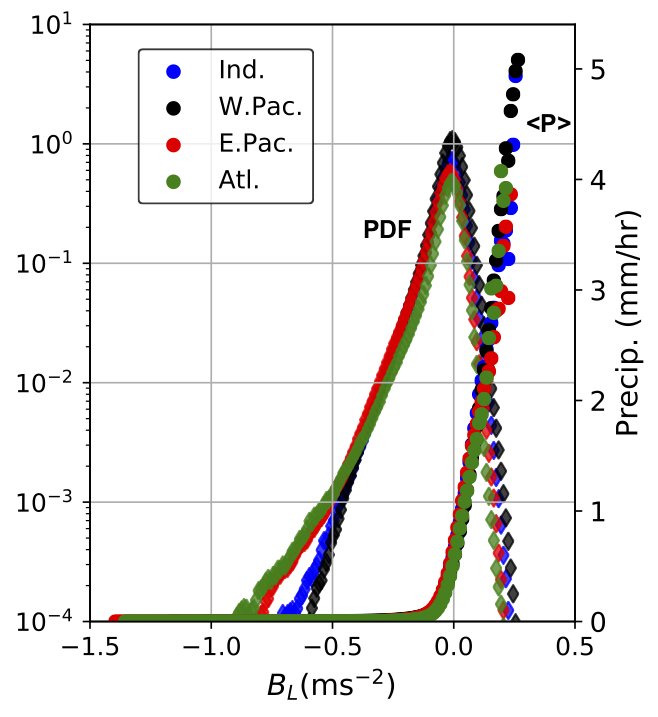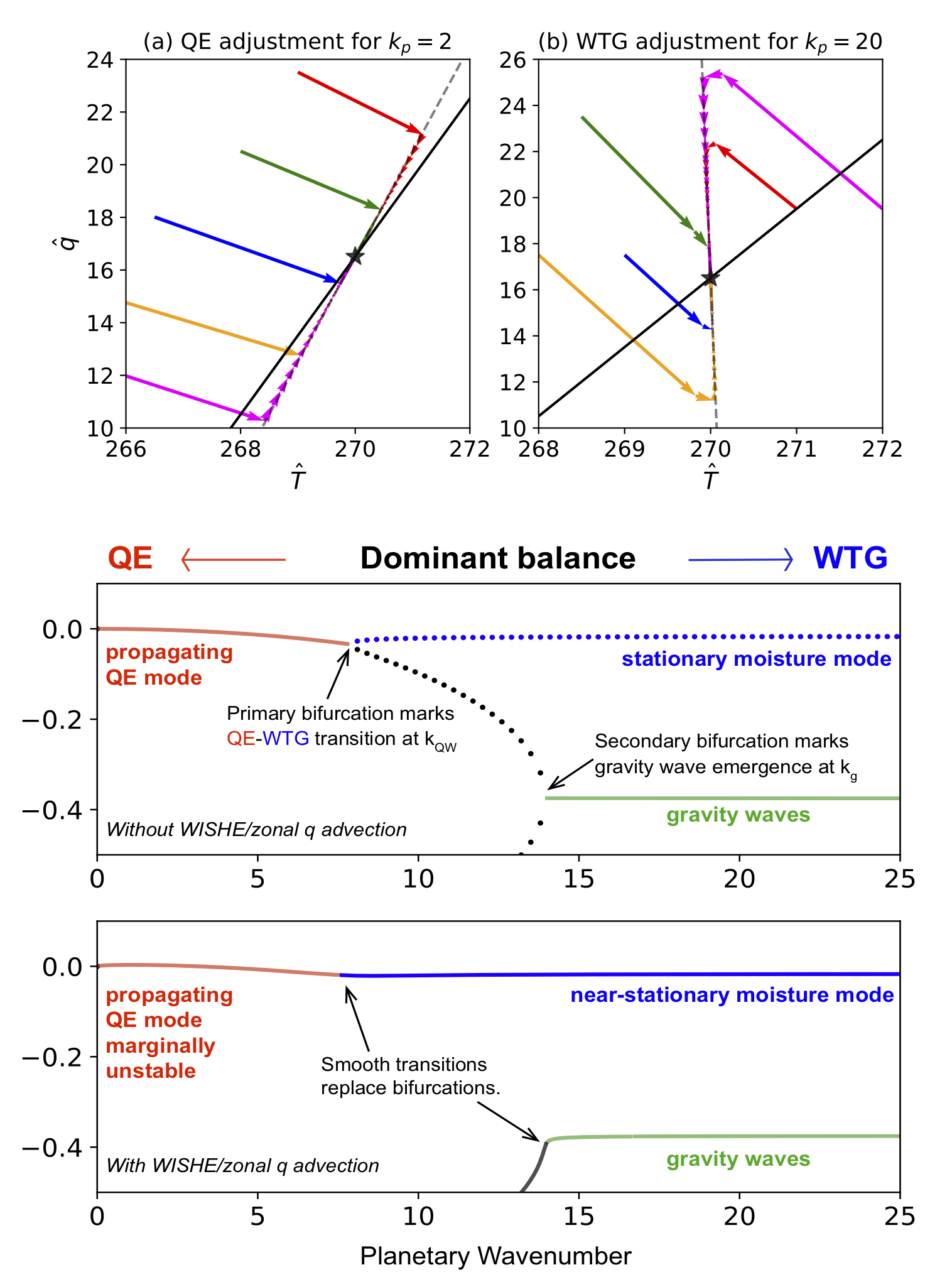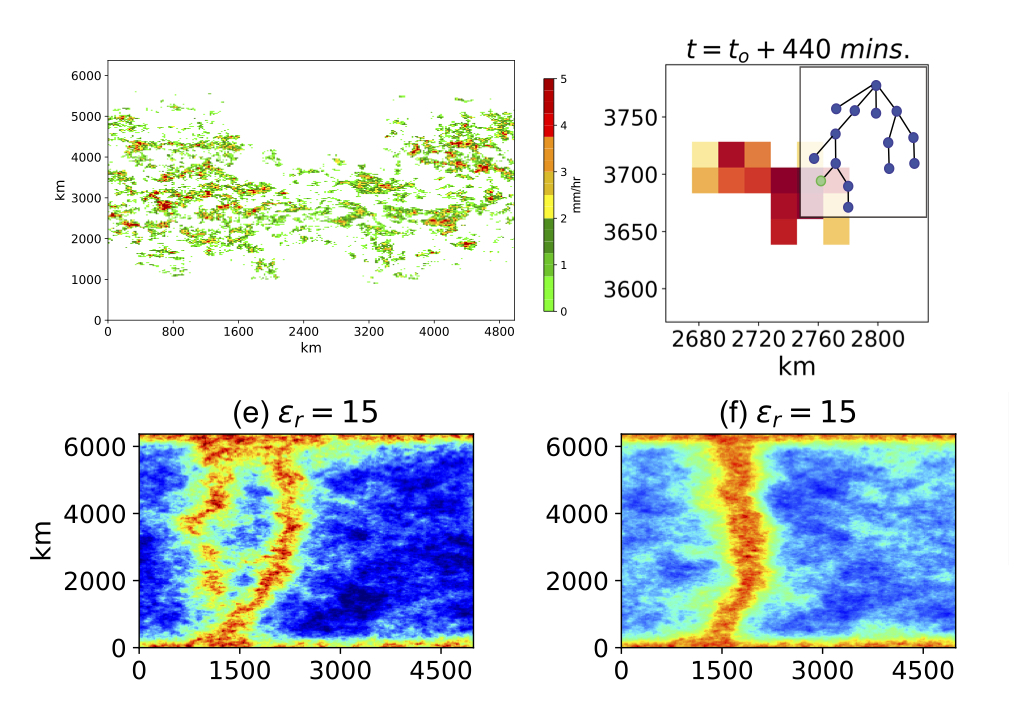Research
Warm, moist environments spawn tropical clouds. These clouds grow, clump, rain and modify the very environment that birthed them. These cloud-environment interactions play out over a vast range of scales; from the size of your neighborhood to sizes spanning continents. I work on understanding these two way cloud-environment interactions by analyzing large datasets and building simple process models. Below is a list of active research interests.
Precipitation Statistics
How warm and moist do environments have to be to produce rain?
Rainfall is a spiky, noisy field with non-unique relationships to its environment. However, certain statistical moments of rainfall exhibit tractable properties. A clean separation between raining and non-raining environments can emerge when the statistics are arranged sensibly. These statistics can then be mined to quantify controls on tropical rainfall.

- Ahmed, F. and J.D. Neelin, 2018: Reverse engineering the tropical precipitation-buoyancy relationship. J. Atmos. Sci., 75, 1587-1608, 10.1175/JAS-D-17-0333.1 [PDF]
- Ahmed, F. and C. Schumacher, 2015: Convective and stratiform components of the precipitation-moisture relationship Geophys. Res. Lett., 42, 10,453-10,462, 10.1002/2015GL066957 [PDF]
Tropical Dynamics
How does the tropical wind field react to rain?
A particularly simple class of wind-rain interactions emerge when rainfall acts like a relief valve to release instability built up in the environment. In this class of interactions, clouds can be thought to "adjust" their environment to a more stable state.
However, clouds must also compete with atmospheric gravity waves in the adjustment process. Any horizontal differences in temperature tend to be erased by gravity waves. As instabilities constantly crop in space, this competition between rain and gravity waves is playing out continuously. The quantitive details of this competition decide many aspects of transient tropical weather and mean climate.

- Ahmed, F., J.D. Neelin and Á.F. Adames: Quasi-Equilibrium and Weak Temperature Gradient Balances in an Equatorial Beta-plane Model. J. Atmos. Sci., In press, 10.1175/JAS-D-20-0184.1 [PDF]
- Ahmed, F., Á.F. Adames and J.D. Neelin, 2020: Deep convective adjustment of temperature and moisture. J. Atmos. Sci., 10.1175/JAS-D-19-0227.1 [PDF]
- Ahmed, F. and C. Schumacher, 2018: Spectral signatures of moisture-convection feedbacks over the Indian Ocean. J. Atmos. Sci., 75, 1995-2015, 10.1175/JAS-D-17-0138.1 [PDF]
Convective Organization
Why do clouds cluster in space?
Raining regions have a propensity to clump into clusters of various sizes. A pretty basic stochastic model can reproduce several properties of rain clusters. Useful analogies exist between how cloud clusters grow in space and a general stochastic process called the branching process. The model even exhibits convective self-aggregation, when feedbacks overwhelm the noise.

- Ahmed, F. and J.D. Neelin, 2019: Explaining scales and statistics of tropical precipitation clusters with a stochastic model. J. Atmos. Sci. 76, 3063–3087, 10.1175/JAS-D-18-0368.1 [PDF]